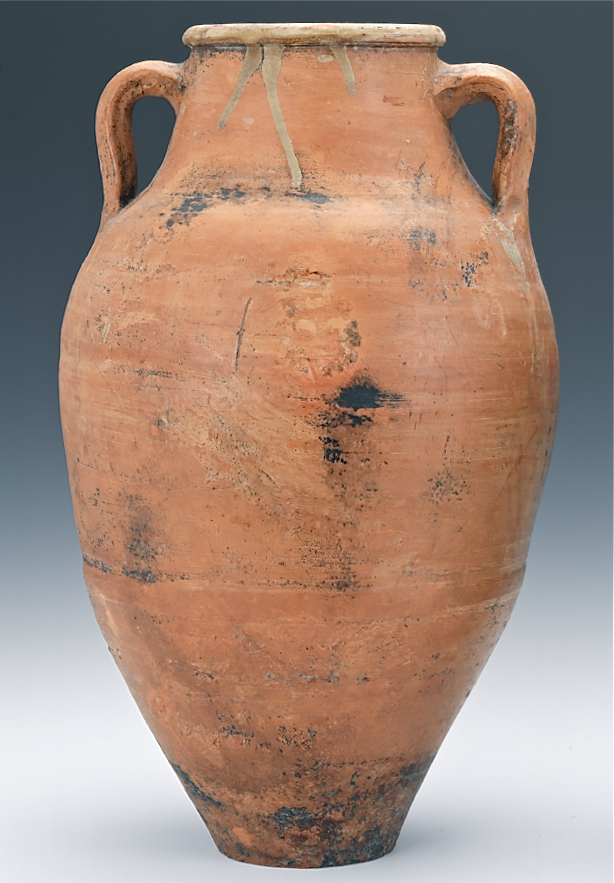

Title: Antique Handmade Mediterranean Tan Glaze Pottery Vase Jar
Shipping: $89.00
Artist: N/A
Period: 20th Century
History: N/A
Origin: Southern Europe > Italy
Condition: Very Good
Item Date: 1900 to 1930
Item ID: 5842
A fantastic looking Mediterranean Pottery Vase Jar. Looks to be Italian a Mediterranean Pottery style. This is a decorative pottery vase. 19"T. Tan glaze earthenware vase with two handles, unmarked. Heavy pottery. Condition: Small losses to glaze, wear. All of the art is edited and chosen by us for its high quality and workmanship before posting. We are committed to enhancing our customer’s lives by discovering creating, and pointing out only the best art we can find in the world today. We Are Taste-Makers, Art Advisers, Consultants & Publishers Of Spectacular Art Stories. Our job is to be intermediaries between buyers and sellers. We are vetting for high end art patrons. We are determined to catalog the world's most exceptional art and share it with everyone.
Link: http://en.wikipedia.org/wiki/Ceramic_glaze
Glaze is a layer or coating of a vitreous substance which has been fused to a ceramic object through firing. Glaze can serve to color, decorate, strengthen or waterproof an item.
Glazing is important for earthenware vessels as otherwise they would be unsuitable for holding liquids due to porosity. Glaze is also used on stoneware and porcelain. In addition to the functional aspect of glazes, they can form a variety of surface finishes, including degrees of gloss and matte and color. Glazes may also enhance an underlying design or texture which may be either the unmodified texture of the underlying body, or an inscribed, carved or painted design.
Ceramic glaze raw materials generally include silica, which will be the main glass former. Various metal oxides, such as sodium, potassium and calcium, act as a flux to lower the melting temperature. Alumina, often derived from clay, stiffens the molten glaze to prevent it from running off the piece. Colorants, such as iron oxide, copper carbonate or cobalt carbonate, and sometimes opacifiers such as tin oxide or zirconium oxide, are used to modify the visual appearance of the fired glaze.
Glaze may be applied by dry dusting a dry mixture over the surface of the clay body or by inserting salt or soda into the kiln at high temperatures to create a sea of sodium vapor that interacts with the aluminium and silica oxides in the body to form and deposit glass, producing what is known as salt glaze pottery. Most commonly, glazes in aqueous suspension of various powdered minerals and metal oxides are applied by dipping pieces directly into the glaze. Other techniques include pouring the glaze over the piece, spraying it onto the piece with an airbrush or similar tool, or applying it directly with a brush or other tool.
Decoration applied under the glaze on pottery is generally referred to as underglaze. Underglazes are applied to the surface of the pottery, which can be either raw, "greenware", or "biscuit" fired (an initial firing of some articles before the glazing and re-firing). A wet glaze—usually transparent—is applied over the decoration. The pigment fuses with the glaze, and appears to be underneath a layer of clear glaze. An example of underglaze decoration is the well-known "blue and white" porcelain famously produced in England, The Netherlands, China and Japan. The striking blue color is achieved by using cobalt in the form of either cobalt oxide or cobalt carbonate, both of which are still commonly used.